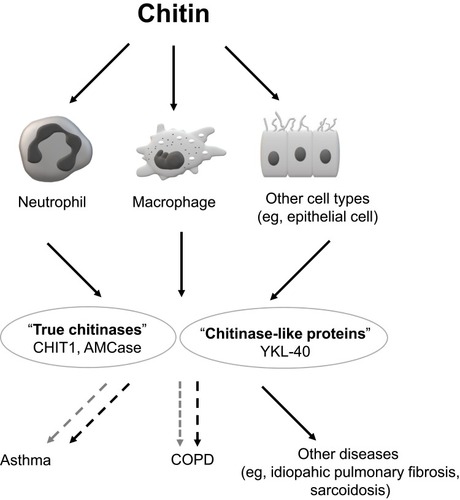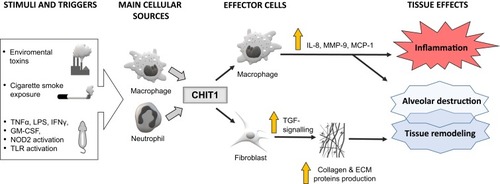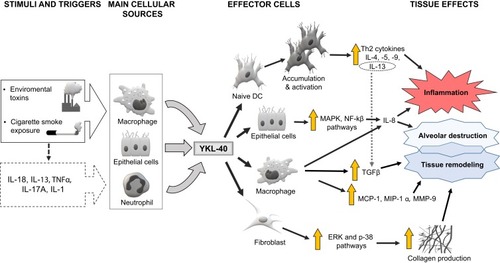Figures & data
Figure 1 Schematic depiction of chitin, chitinases and chitinase-like proteins (CLPs) involvement in lung diseases.

Figure 2 Schematic presentation of the hypothesized links between chitotriosidase (CHIT1) and the pathogenesis of lung inflammation and injury (eg, in COPD).

Figure 3 Schematic representation of the supposed mechanisms involved in YKL-40-related emphysematous lung destruction, tissue inflammation and remodeling.

Table 1 Selected Information About Main Chitinases and Their Role in Humans
